UK: Silver-striped Hawkmoth, F: Sphinx Phoenix, D: Großer Weinschwärmer, RUS: Bolshoi vinnyi Brazhnik, S: Silverbandssvärmare, NL: Wijnstokpijlstaart; Wingerdpijlstaart, CZ: Lišaj révový, H: csíkos szender, E: esfinge de la parra, PL: Zmrocznik winniczak, FIN: Etelänkiitäjä, HR: srebrenoprugi ljiljak, DK: Slank vinsværmer, N: Vingårdsvermer.
Sphinx celerio Linnaeus, 1758, Syst. Nat. (Edn 10) 1: 491.Type locality: Unspecified [Europe].
[Further details on this species, as well as photos of all stages, can be found on Lepiforum.]
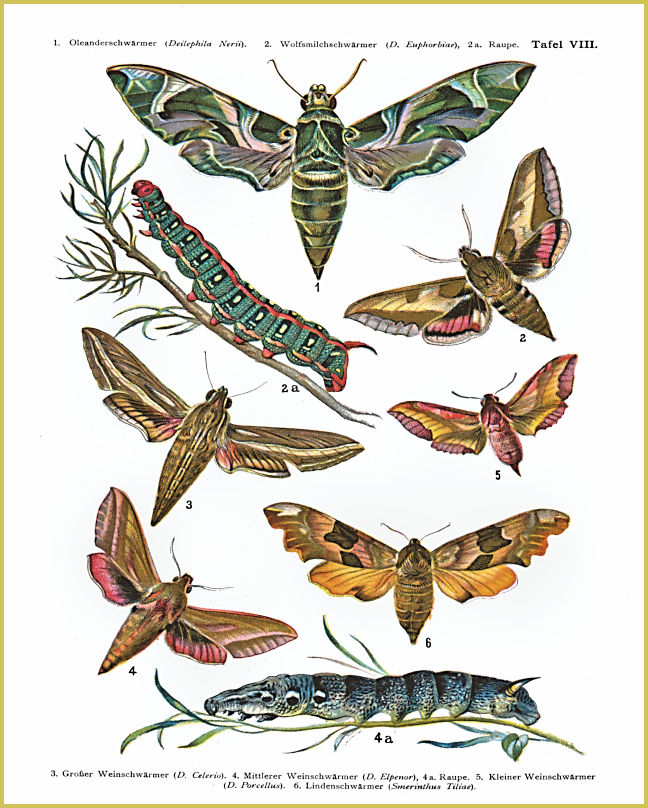
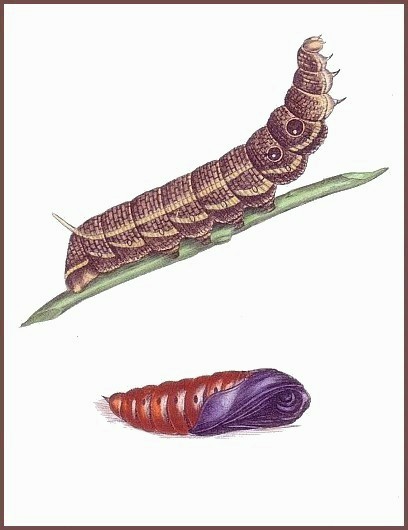
Palaeotropical.
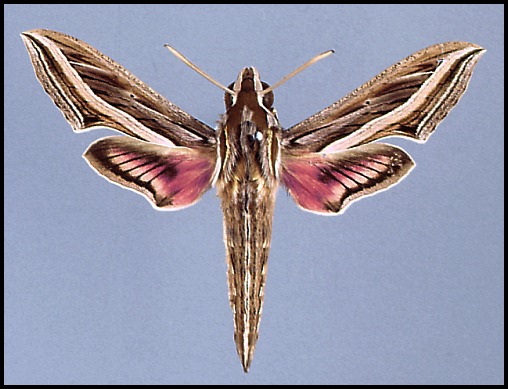
Wingspan: 60--80mm. Forewing upperside with lower edge of the discal cell highlighted in white and black; discal spot a small but conspicuous black dot; oblique postmedian band also highlighted in silver-white (occasionally reduced), angled at Cu1. Hindwing upperside with a bright pink basal and tornal area; black median and submarginal bands separated by a pink postmedian band that is divided into sharply delimited pink spots by sharp black lines along the veins. Foreleg basitarsus with external row of spines accompanied by a row of smaller spines.
Very similar in appearance to Hippotion osiris (Dalman, 1823), but distinguished by its smaller size and black venation on the hindwing. There is greater variation, however, in Hippotion celerio. In f. pallida Tutt, a pale terracotta ground coloration is present; in f. rosea Closs, the wings are suffused with red and, in f. brunnea Tutt, with deep brown. In f. augustei Trimoul, the black markings are so extensive as to cover the entire wings; in f. luecki Closs, the silver markings are absent and in f. sieberti Closs, the oblique stripe on the forewing is yellowish instead of silver.
Male genitalia similar to the Oriental Hippotion velox (Fabricius, 1793), but uncus shorter and stouter. Gnathos shorter and stouter, much more abruptly narrowed into a sharp hook. Harpe much stouter, almost straight, compressed, upperside hollowed apically, with the edges raised. In the female genitalia, ostium bursae ovate, edges raised to form a low, horseshoe-shaped ridge. Sterigma with no processes.
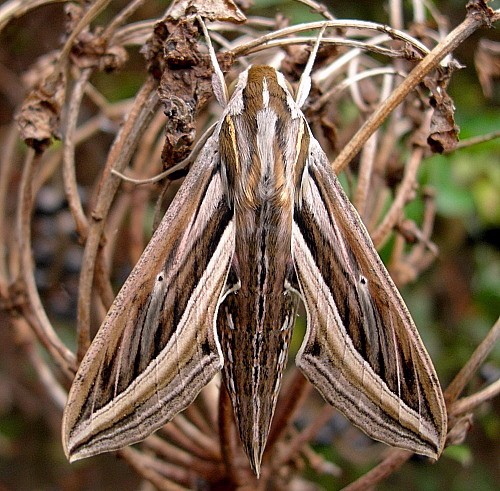
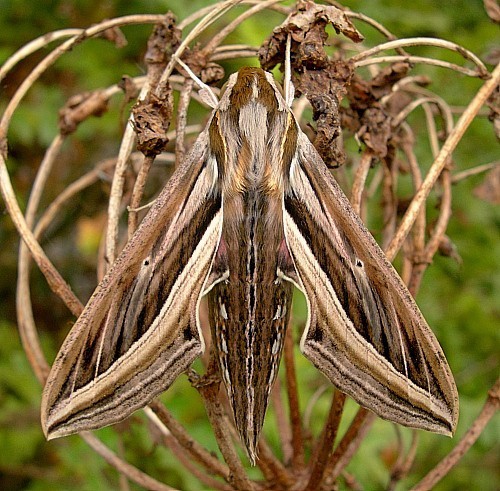
No particular habitat preference is shown by the adult which may occur wherever flower-beds are plentiful; however, for breeding colonies to become established, the presence of cultivated or wild grape vines is essential.
Its cryptic coloration, whatever the variation, makes this species difficult to see as it rests during daylight hours on stones, walls, tree-trunks, or amongst foliage. At dusk it takes flight in search of tubular nectar flowers, such as Saponaria (Caradja, 1893). Although active for only short periods, its powerful and rapid flight enables it to cover great distances; it is frequently attracted to light. Pairing commences a few hours after dusk and lasts only a short time, the pair remaining in copula 1--3 hours.
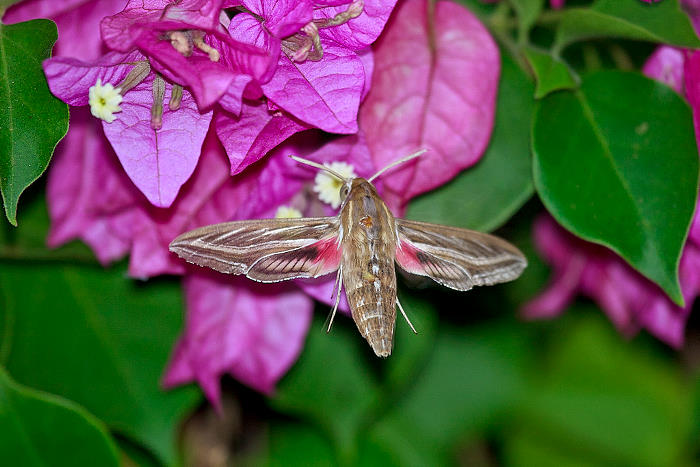
Migrant and multivoltine in its resident range, throughout the year, with up to five well-defined generations. In the Mediterranean area, two or three migrant-induced generations are normal between June and October; individuals from these migrate farther north, to be found during August, September and October. In exceptionally warm springs, such as 2020, it can be found in southern Spain as early as early February.
OVUM: Variable in size and shape, ranging from near spherical to distinctly oval; clear, glossy, bluish green, assuming a greenish yellow hue prior to emergence. Laid singly on both the upper and lower surfaces of leaves near a growing tip, with rarely more than one to a shoot. The lowest shoots, usually of a vine growing along a wall or fence or along the ground, are preferred. Incubation lasts for 5--10 days.
LARVA: Full-fed, 80--90mm. Dimorphic: brown or green.
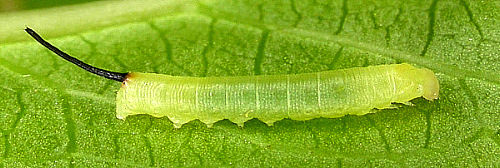
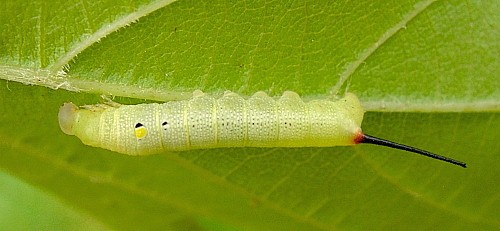
On hatching, the 4mm-long larva is pale yellow with a disproportionately long black horn. It immediately consumes its eggshell, then moves off to find a resting place on the lower surface of a leaf. A period of several hours elapses before any plant material is consumed, after which the body becomes glossy green. In the second instar, eye-spots appear on the first and second abdominal segments; the long dark horn becomes bifurcated at the tip and waves up and down as the larva moves. In the third instar the eye-spots assume their final coloration and a yellow, dorso-lateral line appears, running from thoracic segment 3 to the base of the horn. In the final instar most assume a mid- to dark brown coloration, while a few remain green or turn into a rare blue-grey form. However, unlike most other species there is very little change in colour prior to pupation, even in the green form.
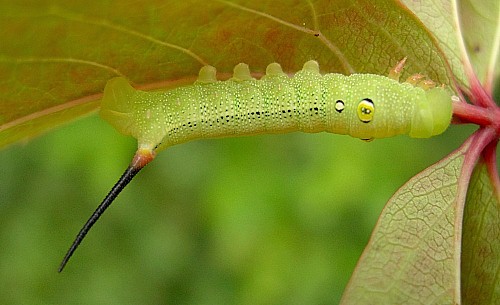
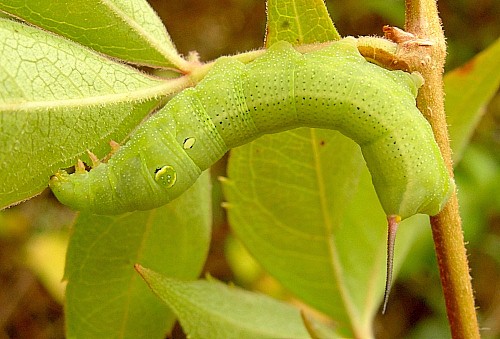
As with most larvae exhibiting anterior eye-spots, the head is retracted when the larva is alarmed, expanding the large eye-spots on the first abdominal segment. When feeding, it rarely consumes the whole of a leaf; shoots with quarter- or half-eaten leaves often indicate the presence of a larva. Whereas young larvae may be found beneath a leaf, fully-grown specimens usually rest away from the feeding area, farther down the stem.
In southern Europe, most occur from July to September; in more northerly localities, during late summer. In the coastal region of Saudi Arabia it occurs throughout the year (Pittaway, 1979b).
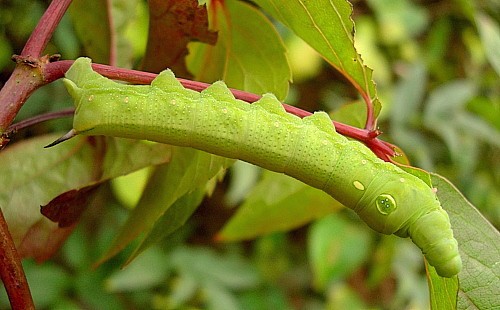
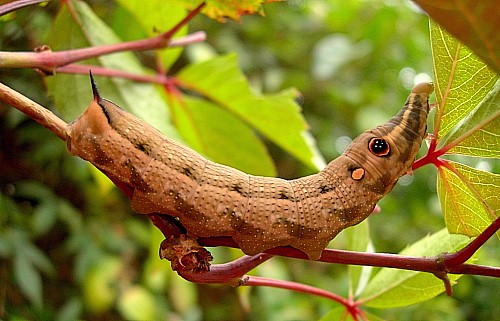
Major Hostplants. Vitis and Parthenocissus spp. An occasional pest of grapevines (Bodenheimer, 1926).
Minor Hostplants. Galium, Fuchsia, Epilobium, Beta, Impatiens, Convolvulus, Scrophularia, Verbascum, Syringa, Rumex, Begonia, Arum, Mirabilis, Cissus, Zantedeschia and Caladium. In the Azores, Zantedeschia aethiopica is commonly utilized. Has also been found in gardens in Israel on Pentas lanceolata and Commicarpus plumbagineus (syn. Boerhavia plumbaginacea) (Dubi Benyamini, pers. comm. 2015). In the Canary Islands often on Rumex vesicarius. Epilobium angustifolium is utilized more often than expected, as is Epilobium hirsutum (Caradja, 1893).
[The houseplant, Cissus antarctica (kangaroo vine), is a very good substitute hostplant during the winter months, as are various species of wild Rumex and Emex (dock) in milder areas.]
[Can be reared in captivity on lettuce (Lactuca sativa). If buying from a supermarket during the winter months, use organic produce (Bernie Betts, 2015).]
PUPA: 45--51mm. Shape the same as that of Hippotion velox, i.e. proboscis projecting, laterally compressed and cariniform. In colour, tongue-case, legs, antenna and wing-case with a golden lustre; veins and legs dotted with black. Head, thorax and abdomen pale russet brown, darker on dorsum of abdomen, venter of abdomen greyish. An interrupted black ventral stripe is present on segments 8 to 10; there is also a subspiracular stripe of coalescent brown dots. Bevels of segments 8 to 10 brown; spiracles black surrounded by a greyish area dotted with russet; cremaster dark reddish-brown. Surface moderately shiny; head and thorax superficially wrinkled; tongue-case, antenna and wing-case nearly smooth, with a metallic lustre. Abdomen closely, finely transversely corrugate; front bevels of segments 9 to 11 punctate-corrugate. Spiracle of segment 2 a narrow slit covered by a slight, raised emargination of the front margin of 3; remaining spiracles oval, surface slightly depressed. Cremaster triangular at base, but extending into a long, glossy shaft which terminates in a very sharp point; ventral surface slightly hollow. Formed in a loosely spun brown cocoon, either on the ground amongst litter, or just below the surface of the soil. Does not overwinter in the region.
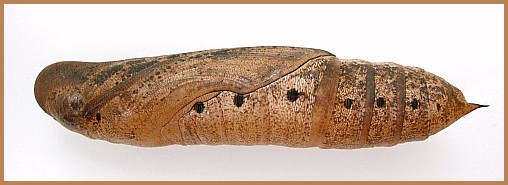
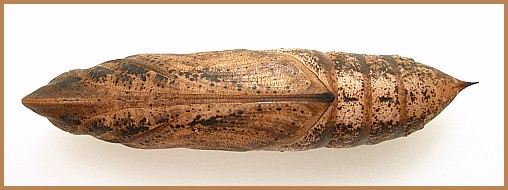
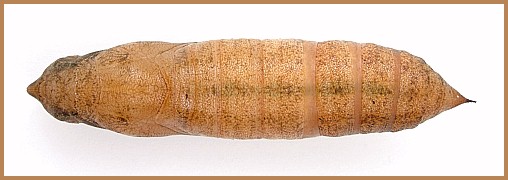
Trichogrammatidae: Trichogrammatoidea lutea (Girault, 1911) -- an egg parasite. Tachinidae: Drino (Zygobothria) atropivora (Robineau-Desvoidy, 1830), Drino vicina (Zetterstedt, 1849).
A notable migrant in most years from tropical Africa and India (Pathania, Sunita Sharma & Gill, 2014) to the western Palaearctic region. In warm years, new colonies may even be established in North Africa and Europe, so the delineation between resident and migrant ranges cannot be clearly defined. It is, however, resident in the Canary Islands, and probably also in the Azores (Vieira, 1997) and along the Atlantic coast of Morocco and Cape Verde Islands (Vieira, 2008; Baliteau & Baliteau, 2011; Tennent & Russell, 2015). It is certainly resident in many areas of the Levant and the Arabian Peninsula (Pittaway, 1979b), and Egypt (Badr et al., 1985).
In some years this species can be (or used to be) common in southern Europe, such as in 1854-59, 1863, 1869, 1876-79 & 1885-86 in Haute-Garonne, France (Caradja, 1893).
Extra-limital range. Tropical Africa (including Ascension Island, Madagascar and the Seychelles (Matyot, 2005)), tropical Asia and Australia eastwards to Rapa Iti, French Polynesia (Clarke, 1971), with occasional records from northern New Zealand.
 Return to species list
Return to species list